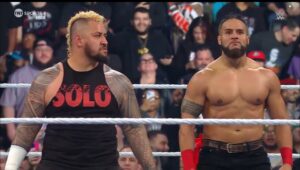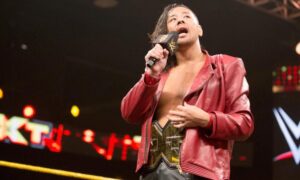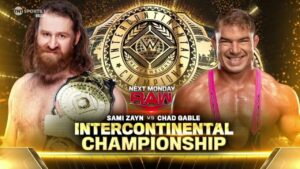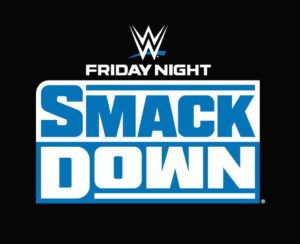Wrestling Meccas is a series of features at Last Word on Pro Wrestling that looks at the history of some of professional wrestling’s most iconic venues, from large stadiums to small indie havens. Our second edition heads to Tokyo, Japan to look at what many consider the “Madison Square Garden of Japan”, the famed Kōrakuen Hall.
In the Bunkyō ward of Tokyo in Japan, stands one of the most sacred temples for professional wrestling in the world. Today, it is dwarfed in size (and for many younger fans, in name as well) by its Tokyo Dome City neighbor, the Tokyo Dome, as the biggest wrestling venue in the country, but Kōrakuen Hall’s name still carries a name of reverence amongst historians and fans of puroresu. As New Japan star Rocky Romero stated in a video for NJPW in 2017, it is the “the sacred holy battleground of the warrior fighting spirit.”
Kōrakuen Hall (1962-present), 1 Chome-3-61 Koraku, Bunkyo City, Tokyo

On May 26, 1959, Japan was announced as the home country for the 1964 Summer Olympics, becoming the first Asian country to host the Olympic Games. In preparation for the big event, Japan began working to modernize and update their sporting venues. On April 16, 1962, they opened Kōrakuen Hall as a new sporting venue. Nestled beside Kōrakuen Stadium, the country’s top baseball stadium, Kōrakuen Hall would become more of a theatre to showcase combat sports like boxing, kickboxing, martial arts, and professional wrestling. It went on international display as the home for the boxing events during the 1964 Summer Olympics.

By 1966, pro wrestling was getting its feet wet in the Hall, which holds approximately 2,000 spectators for events. Japan Wrestling Association (JWA), Japan’s top puroresu company founded in 1953 by Rikidōzan, began running larger events there, beginning with their JWA New Year’s Series on December 30, 1966, which saw Giant Baba & Michiaki Yoshimura defeat “Killer” Buddy Austin & Mr. Atomic (Clyde Steeves) in the main event. Sadly, Rikidōzan would never compete at Kōrakuen Hall, passing away in 1963 just after it opened – but he did face Lou Thesz next door at Kōrakuen Stadium, where they fought to a 61-minute time limit draw for the National Wrestling Alliance (NWA) World’s Heavyweight Championship in front of 30,000+ fans. But as professional wrestling began to gain momentum in Japan, so did the legend of Kōrakuen Hall grow itself. The 1960s closed out with the Hall seeing future legends like Giant Baba and Antonio Inoki make their Kōrakuen Hall debuts, as well as the beginning of an influx of gaijin stars like Harley Race in 1969. But while pro wrestling was getting hot in Japan – and getting hotter at Kōrakuen Hall – it would be a few more years until the Hall would become a major destination for fans and promotions alike.
Korakuen Hall in the 1970s
JWA continued to bring in top gaijin from the United States, Mexico, and Great Britain, with the likes of Billy Robinson (1970), Bruno Sammartino (1971), Abdullah the Butcher (1971), Terry Funk & Dory Funk Jr. (1971), Mil Mascaras (1972), and Bobo Brazil (1972) all making their Kōrakuen Hall debuts in the early 1970s. But by the time Fritz Von Erich and Tatsumi Fujinami came in in 1973, JWA was in shambles. It had fallen apart in the years following the death of Rikidōzan in 1963 and it closed its doors in 1973. But in its place, like a puroresu hydra, rose All Japan Pro Wrestling (AJPW) and New Japan Pro Wrestling (NJPW) in 1973, founded by Rikidōzan pupils Giant Baba and Antonio Inoki respectively. Both AJPW and NJPW would follow into Kōrakuen Hall in their inaugural years, but they wouldn’t be the only companies plying their wares in the Hall – All Japan Women’s Pro Wrestling (AJW), who had been operating since 1968, made their Kōrakuen Hall debut in 1973 as well.
The 1970s saw many new faces make their Kōrakuen Hall debuts, including such future legends as Atsushi Onita (1974), Tiger Mask I (1976), Genichiro Tenryu (1977) and Riki Choshu (1978), as well as a steady influx of gaijin including The Sheik and Andre the Giant (1974), Dusty Rhodes (1975), India’s Tiger Jeet Singh (1976), and Ric Flair (1978). In 1979, two of the most feared gaijin in Japanese history, Bruiser Brody and Stan Hansen, also made their debuts at the famed Hall.
Korakuen Hall in the 1980s
The 1980s saw a boom in professional wrestling in Japan, albeit not quite on the global scale that Vince McMahon Jr.‘s World Wrestling Federation (WWF) would see. But Kōrakuen Hall remained a fixture on the Japanese puroresu scene and continued to field events for AJPW, NJPW, and AJW, amongst others. In 1980, the Hall bore witness to appearances from Hulk Hogan and the Dynamite Kid, while the following year, American Wrestling Association (AWA) great Verne Gagne would make his Hall debut, the same year that Mitsuharu Misawa would also make his first appearance at Kōrakuen. While Kōrakuen Hall was a favorite venue for many of the large promotions, it’s smaller capacity of around 2,000 people made it less of a destination for major events, so major title changes were a rarity in comparison. But on April 30, 1981, Dory Funk Jr. defeated Bruiser Brody for the NWA International Heavyweight Championship at Kōrakuen Hall, one of the top titles in Japan (it would be merged with the Pacific Wrestling Federation (PWF) Heavyweight title, All Japan’s top title, as well as the NWA United National title in 1989 to create the All Japan Triple Crown).
The 1980s saw hosts of future legends make their debuts at the Hall, such as The Crush Gals (Lioness Asuka & Chigusa Nagayo) and Jaguar Yokota in 1983, Jushin Thunder Liger in 1984 (although he wouldn’t debut as the masked Liger until 1989), Keiji Mutoh (aka The Great Muta), Shinya Hashimoto, Masahiro Chono, and Dump Matsumoto in 1985, Kensuke Sasaki, Aja Kong, and Bull Nakano in 1986, Kenta Kobashi and Minoru Suzuki in 1988, and Manami Toyota in 1989. Gaijins continued to “invade” Japan and notable Kōrakuen Hall debuts in the 1980s include Bret Hart (1982), Curt Hennig (1983), Owen Hart and Chris Benoit (1987), and Vader (1988). In 1989, Onita’s new promotion, Frontier Martial-arts Wrestling (FMW) would make their own debut at Kōrakuen Hall, which lasted until the company folded in 2002.
Korakuen Hall in the 1990s
The 1990s continued to see the rise of Japanese pro wrestling, becoming a fiercely traded commodity amongst tape traders in the pre-internet world. With the rise in new promotions, based on the success of AJPW and NJPW, the hardcore intensity of FNW, and the joshi magic of AJW, more and more promotions began to infiltrate the sacred walls of Kōrakuen Hall. Union Of Professional Wrestling Force International (UPWFi) began running shows in 1991, followed by Wrestle Association-R (WAR), Ladies Legend Pro Wrestling-X (LLPW) and Japanese Women Pro-Wrestling Project (JWP) in 1992, Michinoku Pro in 1993, Big Japan Wrestling (BJW) and GAEA in 1995, NEO Ladies in 1998, and Dramatic Dream Team (DDT Pro) in 1999, to name but a few. And while Kōrakuen Hall is often referred to as the Madison Square Garden of Japan, it was actually quite opposite. For the bulk of Madison Square Garden’s history, that venue was almost exclusively the home to a promotion run by a member of the McMahon family; meanwhile, Kōrakuen Hall opened its doors to anyone and everyone, making it a far more inclusive staple in the puroresu and joshi scenes. Ironically, enough, to date, WWE is one of the few companies never to run an event in Kōrakuen Hall.
New Japanese stars continued to make their own Hall debuts in the 1990s, such as The Great Sasuke and Ultimo Dragon in 1990, Hiroyoshi Tenzan and Hayabusa in 1991, Command Bolshoi in 1992, Yuji Nagata in 1993, Tiger Mask IV and Meiko Satomura in 1995, Emi Sakura in 1996, Naomichi Marufuji in 1998, and CIMA and New Japan “Ace” Hiroshi Tanahashi in 1999. Many more gaijin stars found themselves at Kōrakuen for the first time in the 1990s, such as Mexico’s Negro Casas (1991), American hardcore legend Cactus Jack (Mick Foley) in 1991, Eddie Guerrero (1992), Chris Jericho (1994), Rey Mysterio Jr. (1996), and an American Dragon (Daniel Bryan) and Fallen Angel, Christopher Daniels, in 1999. In 1997, Mexico’s Consejo Mundial De Lucha Libre (CMLL) made their own debut at the Hall. Much like the legendary punk rock dive CBGB’s became a small venue to prove your worth before moving on to bigger venues in the 1970s and 1980s, so did Kōrakuen Hall become a similar stage in Japan.
Korakuen Hall in the 2000s
With larger and larger stadiums becoming the norm for larger events by the likes of NJPW and AJPW, Kōrakuen Hall saw its role diminish within the bigger promotions, but they still were integral parts of the live experience – many tribute or retirement shows were held at the Hall. But while larger players may have scaled back on the use of the Hall, there was always new promotions arriving to fill the vacancies, such as Pro Wrestling NOAH in 2000, Pro Wrestling ZERO1 in 2001, OZ Academy in 2003, Dragon Gate in 2004, and Ice Ribbon in 2009.
Kōrakuen Hall continued to see new faces make their mark on the industry, with the likes of KENTA (2000), Shinsuke Nakamura (2003), Kana (aka WWE’s Asuka, 2004), Kazuchika Okada and Tetsuya Naito (2006), and Io Shirai (2007) all making impressions early in their careers. ZERO1 introduced several new gaijin faces to the Hall in the early 2000s with Samoa Joe (2001), AJ Styles and CM Punk (2003), while Kenny Omega made his own Kōrakuen Hall debut in 2008 with DDT Pro, the same year Chris Hero would debut at the Hall with NOAH. Dragon Gate would also bring in its share of new gaijin, such as PAC in 2007 and The Young Bucks in 2008. In 2006, Dragon Gate would facilitate one of the biggest title changes at Kōrakuen Hall, when Ryo Saito captured the Open the Dream Gate (Heavyweight) Championship in late February.
https://www.youtube.com/watch?v=o9I_7IPiyBU
Korakuen Hall in the 2010s and the Future
Kōrakuen Hall remains a fixture within the scene and its evergrowing occupancy from multiple promotions has kept the Hall a deeply rooted part of the puroresu and joshi worlds. The past decade has seen more companies arise and utilize the Hall, including Pro Wrestling FREEDOMS and Pro Wrestling WAVE in 2010, Sendai Girls and Stardom in 2011, WRESTLE-1 in 2013, PURE-J in 2017, and Marvelous in 2018. On July 24, 2011, Stardom crowned their two inaugural top singles champions, Nanae Takahashi as the World of Stardom Champion and Yuzuki Aikawa as the Wonder of Stardom Champion, within the confines of Kōrakuen Hall. A year later, Kairi Hojo (WWE’s Kairi Sane) would make her own debut at the Hall. In January of 2014, NOAH saw their GHC Heavyweight Championship change hands at Kōrakuen for the first time, when Takeshi Morishima won his 3rd title.
Thanks to their joining the IWGP Conception, Ring of Honor made their own Kōrakuen Hall debut in 2016, and has consistently returned to the Hall for co-productions with NJPW, much like CMLL has. Following his return to Dragon Gate after his departure from WWE, PAC (formerly Neville) finally won the Open the Dream Gate Championship at the Hall on December 4, 2018, and it continues to see gold change hands, with Go Shiozaki winning NOAH’s GHC Heavyweight title for his 4th time this past January over Kaito Kiyomiya.
As long as there is pro wrestling in Japan, there will be pro wrestling in Kōrakuen Hall. It’s become a place that not only has a five-decade-long history with the sport but a place that younger wrestlers look forward to competing in. “That place is a little hotbox. It only fits about 1,700, 1,800, which is a lot of people actually, but it’s in a very intimate setting and there’s not a bad seat in the house,” NJPW star Juice Robinson told SLAM! Sports in 2018. “It gets real hot in there, and I’m not talking temperature, I mean energy. It’s fun. And the people that go to the Kōrakuen shows are totally, always, 100 percent up to speed with all the storylines; they’ve got their finger on the pulse.” Robinson also attributes his own success in Japan to his getting over at the Hall, telling SLAM! that “the first place that I kind of got over was Kōrakuen. Then other people see that you get over in Korakuen, the other fans, and then they watch the TV, and then they get to know you on the TV, but it all starts in Kōrakuen.”
Today, the Hall is home to dozens of promotions across Japan and it continues to be a place for new and old stars alike to shine, to reinvent or discover themselves, in front of some of the most passionate wrestling fans on the planet. It is indeed, the sacred holy battleground of the warrior fighting spirit, not only in Japan but around the world.
Check out our Wrestling Meccas features archive for more!
Stay tuned to the Last Word on Pro Wrestling for more on this and other stories from around the world of wrestling, as they develop. You can always count on LWOPW to be on top of the major news in the wrestling world. We provide you with analysis, previews, videos, interviews, and editorials on the wrestling world.






